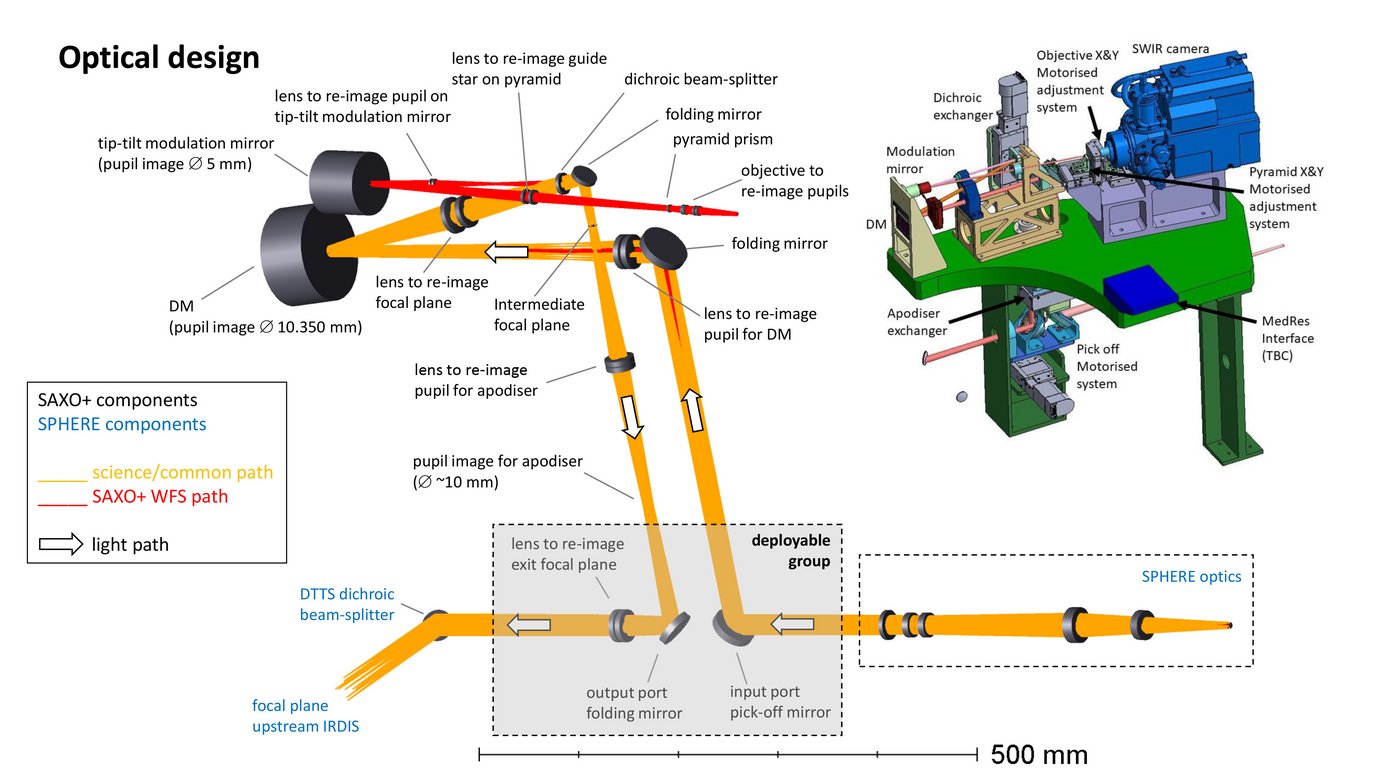SPHERE+
Boosting High Contrast Imaging Capabilities of SPHERE
SPHERE+ is a project of upgrading the instrument SPHERE installed at the Very Large Telescope in Chile (ESO) since 2015. While SPHERE has produced a significant amount of scientific results on exoplanetary systems, limitations of the system exist that have by now been well understood. In addition, SPHERE and others proved that giant planets are rare beyond 10AU, so the focus SPHERE observations needs to shift to 3-10AU.

SPHERE+ drivers
With respect to SPHERE, SPHERE+ is designed to :
1/ achieve deeper contrasts at closer angular separations to access the bulk of the giant planet population, building on the synergy with radial velocity surveys and the Gaia mission.
2/ observe fainter and redder stars to improve the complementarity with sub-millimeter observations with ALMA in the context of planet-forming circumstellar disks.
3/ increase the spectral resolution to characterize further young giant planet atmospheres.
Technical Solutions
To achieve these scientific goals, the SPHERE+ consortium proposed to upgrade SPHERE with two sub-systems :
- SAXO+ : a second stage adaptive optics system, sensing the wavefront in the infrared, downstream the first stage but operating faster.
- MEDRES : a MEDium RESolution integral field spectrograph with a spectral resolution of at least ~1000 in a narrow field of view of ~0.6”.
Consortium
LESIA, CNRS, Paris Observatory, France; CRAL, CNRS, Lyon, France; INAF, Padova Observatory, Italy; INAF, Bologna Observatory, Italy; IPAG, CNRS, Grenoble, France ; PlanetS, University of Geneva, Switzerland ; Lagrange, CNRS, Nice, France ; LAM, CNRS, Marseille, France ; Institute of Optics Graduate School (IOGS), Palaiseau, France ; Max Planck Institute (MPIA), Heidelberg, Germany; European Southern Observatory (ESO), Garching, Germany ; CEA, Saclay, France ; NOVA, Leiden Observatory, France
